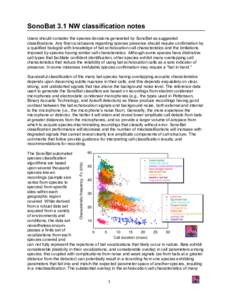 Date: 2012-08-09 21:19:52Bats of the United States Mouse-eared bats Bats of Canada Animal communication Animal echolocation Sonar Bat Long-eared myotis Yuma myotis Eastern red bat Bat detector | |  SonoBat 3.1 NW classification notes Users should consider the species decisions generated by SonoBat as suggested classifications. Any final conclusions regarding species presence should require confirmation by a qualifi SonoBat 3.1 NW classification notes Users should consider the species decisions generated by SonoBat as suggested classifications. Any final conclusions regarding species presence should require confirmation by a qualifi
Add to Reading ListSource URL: www.sonobat.comDownload Document from Source Website File Size: 669,76 KBShare Document on Facebook
|

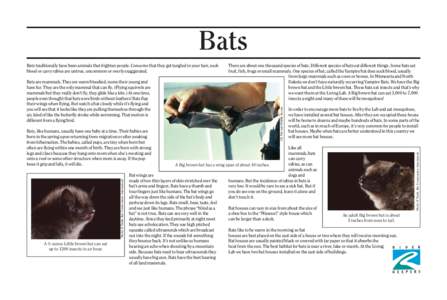
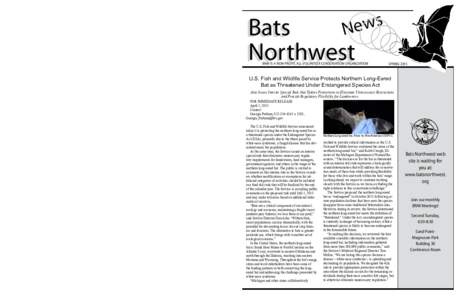

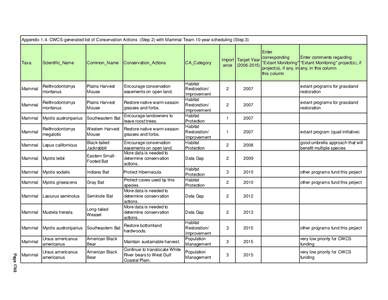
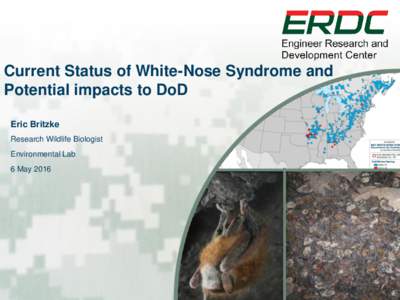
 SonoBat 3.1 NW classification notes Users should consider the species decisions generated by SonoBat as suggested classifications. Any final conclusions regarding species presence should require confirmation by a qualifi
SonoBat 3.1 NW classification notes Users should consider the species decisions generated by SonoBat as suggested classifications. Any final conclusions regarding species presence should require confirmation by a qualifi